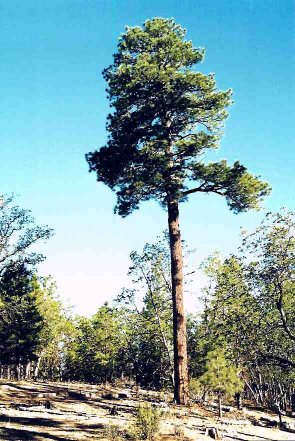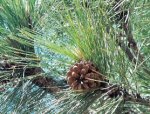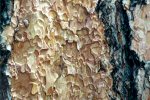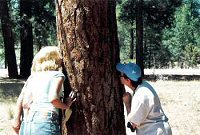Ponderosa Pine - Pine Family
Pinus ponderosa

Ponderosa Pine is the only long-needled pine at the South Rim. Needles are usually five to nine inches long and come
in bundles of three. The tree attains a height of about 110 feet here, but at least 160 feet in the more moist mountains of California.
John Muir (1838-1914), the great naturalist who is sometimes called the "father of our national parks," measured a ponderosa in the Sierra
Nevada that was 220 feet tall and 8 feet in trunk diameter. Two to four feet in diameter is common for the large ponderosas here at
the South Rim. Cones are three to six inches. An exceptional ponderosa may attain an age of 600 years.
Young ponderosas have rough black bark. Mature trees have thick orange-brown bark that protects the tree from mild wildfire. In addition,
mature trees drop their lower branches in a process called self pruning. This prevents brush fires from climbing to the crown. Such
adaptations are useless in extreme fire conditions such as those that have prevailed recently in many western states. Fortunately, so far,
the Grand Canyon's South Rim has been spared.

Ponderosa cones contain winged seeds that are too small for people but just right for the South Rim's Abert Squirrel and many bird species.

Mature ponderosa bark occurs in furrowed plates. Look closely and you will see little puzzle pieces. It's fun to imagine animal shapes in the pieces.

Ponderosa pine bark smells like vanilla.